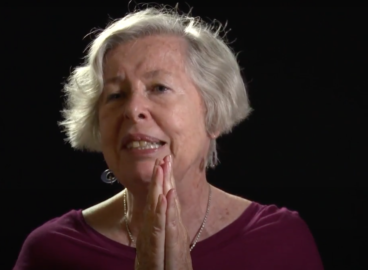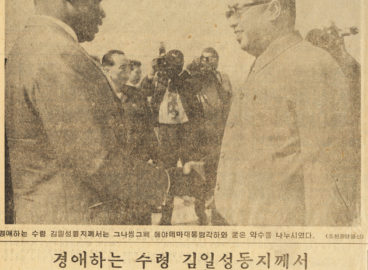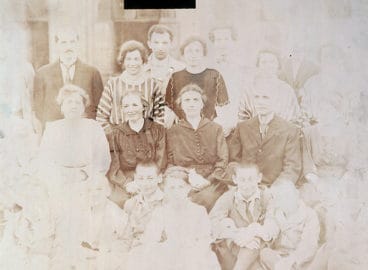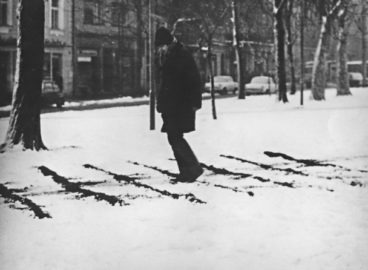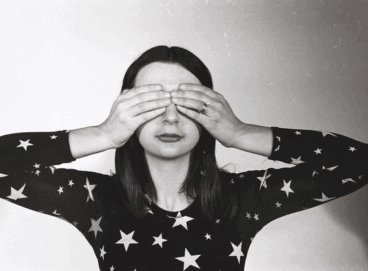This is the first of three installments in the series “Texts by Conceptual Artists from Eastern Europe,” organized by art historian Sven Spieker for post. This series presents newly translated texts from the 1970 by Conceptual artists from Poland, Hungary, and Slovakia. The focus of this installment is Poland.
The second installment, featuring texts from Hungary, can be found here. The third installment, featuring texts from Slovakia, can be found here.
INTRODUCTION
In this project I present, in three installments, previously untranslated texts by contemporary artists from the former Eastern Europe (Poland, Hungary, and Slovakia). More specifically, the publication is part of a larger plan to edit, in book form, annotated translations of key texts by Conceptual artists from the region. Such a resource is not only a crucial step in the ongoing recalibration of Conceptual art as a diverse, internationally oriented phenomenon with a global reach, it will also demonstrate that Conceptual art from Eastern Europe, far from being a decorative outgrowth of its US or Western European equivalent, actively critiqued some of the key positions associated with Western Conceptualism from the beginning—and from a viewpoint that was infused with, among other things, the specific experience of life behind the Iron Curtain.
The embrace of Conceptualism by unofficial artists from Eastern Europe is generally viewed as part of their effort to overcome international isolation. Deprived of an audience and of institutional outlets for showing their work, unofficial artists embraced “idea art” as a way to loosen the state’s stranglehold on the exhibition and circulation of art. Importantly, and contrary to current trends in corporate globalization, this did not translate into the erasure of difference or into political indifference. In fact, all three texts, offered here in translation for the first time, can be read as emphatic pleas for difference and as impassioned rejections of ideological dogma.
Jarosław Kozłowski, Ewa Partum, and Zbigniew Gostomski, the artists chosen for the first installment of this series, are all affiliated with Conceptual tendencies in Poland. In Jarosław Kozłowski’s “A Raven Will Not Pick a Raven’s Eye, Etc.” (1976), the author questions the possibility of using inductive logic to produce general descriptions of the world. Kozłowski argues that inductive reasoning can only prove something to be correct by excluding whatever may contradict such proof. Writing in an analytical style we associate with the English language rather than with Polish—a style that Kozłowski adopts as if it were a readymade—he extends common-sense skepticism to art: can we define “artistic facts,” using the same inductive method, as always context dependent in the way that some adepts of Conceptual art in the West have done? Skeptical in this regard, Kolzłowski demonstrates that we cannot, since plenty of examples can be found of facts that, while they are indeed context dependent, are not considered art. Hence, we cannot reliably argue that all art is context dependent. Kozłowski writes in the name of what I want to call a radical ontology of possibility whereby what exists does so only by dint of what could be, creating a situation in which the only thing whose existence can be established beyond a doubt is possibility itself: “(1) It is possible that art is context dependent.” / (2) “It is possible that art isn’t context dependent.”
The same might be said of Ewa Partum, who has devoted her career to thinking about the inclusion of women in social and artistic life as a possibility. Partum’s Address Gallery (Galeria adres, 1972–77), housed in a tiny space under a staircase at the Łódź headquarters of Association of Polish Plastic Artists was set up to exhibit Conceptual art and documents related to mail art that were, as such, manifestly beyond the scopes of the official galleries or museums. Much like Kozłowski, Partum carved an autonomous niche out of the ideologically marked space that surrounded her, creating her own context. In her startling (and, in the context of Eastern Europe, unique) public installation The Legality of Space (Legalność przestrzeni) (1971), she placed an array of real and fictitious public signs (such as CONSUMPTION IS FORBIDDEN) on Liberty Square (Plac Wolności) in the central Polish city of Łódź, together with a statement that, on the wall of an adjacent building, is being published in English for the first time here. Like the inductive logic Kozłowski questions in “A Raven Will Not Pick a Raven’s Eye, Etc.,” the signage Partum exhibited as part of The Legality of Space questions any universal logic or system of signification. By recontextualizing the signs and exhibiting them in a public square, Partum creates her own, semantically empty context (pure possibility) that is, as such, freed from any object: “THIS SITUATION SERVES ONLY TO PRESERVE FREE SPACE, WHICH SHOULD NOT BE FILLED BY ANY FORM OF AN EXPERIENCE.”
Partum’s words could serve as a motto for Zbigniew Gostomski’s influential project It Began in Wrocław (1970), which he conceived for the art symposium Wrocław ’70. Gostomski suggests the progressive distribution of a pair of identical elements (●/) across an urban plane that remains as indifferent to their existence as they remain to the existence of the (actual) city. Like Partum, Gostomski adheres firmly to the tenets of artistic autonomy, aiming to carve out a space free from signification. Perhaps the biggest difference between It Began in Wrocław and Partum’s insertion of street signs into the urban landscape, however, is the fact that Partum’s “semiotic turn” (unlike Gostomski, she uses home-made symbols with meanings attached to them) appeals as much to the abstraction of the law as to an actual audience, implying an element of social interaction that is missing from Gostomski’s vision of a fully autonomous, radically nonsocial realm of non-signification.
With special thanks to Zbigniew Gostomski, Jarosław Kozłowski, Ewa Partum as well as Foksal Gallery, Karolina Majewska-Güde, Lech Stangret, Marcin Wawrzyńczak, and Joshua Young. Produced by Ksenia Nouril, C-MAP Fellow for Central and Eastern European Art, The Museum of Modern Art, New York.
